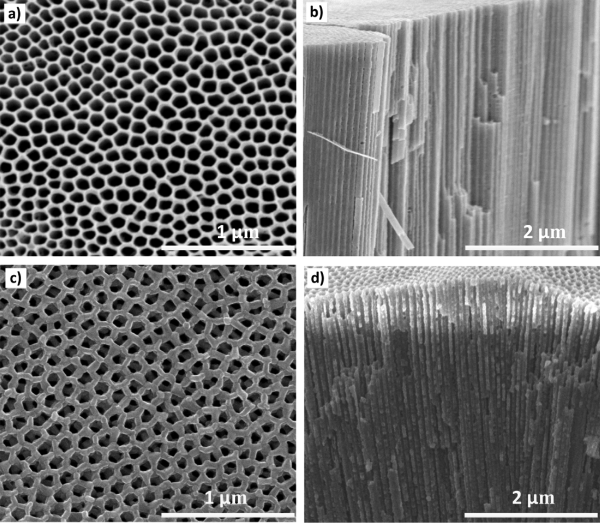Synergistic effect of bi-phased and self-doped Ti+3 on anodic TiO2 nanotubes photoelectrode for photoelectrochemical sensing
Journal: Journal of Alloys and Compounds (click here for full paper)
Authors:
Contact details for further info: pcooi@ukm.edu.my
Summary:
Inclusive detection of organic compounds in aqueous solutions is a promising yet challenging approach for photoelectrochemical (PEC) sensors. In this work, the combined factors of crystalline phase change and Ti3+ self-doping were introduced to some fabricated anodic TiO2 nanotubes (ATNTs) to improve their efficacy as potential PEC sensors. Several TiO2 electrodes were effectively fabricated according to the variation of the factors as mentioned above via dual-step anodization process of a Ti foil, followed by high-temperature annealing under a hydrogen reduction atmosphere. As evidenced by XPS and wettability tests, oxygen vacancies were created in the crystalline lattice of TiO2 nanotubes as shallow donors’ levels which boosted the electronic conductivity of ATNTs. This enhancement in the electronic conductivity was endorsed and assessed by photoelectrochemical (PEC) properties performance testing. The PEC performance results indicated that bi-phased (anatase and rutile) Ti3+-ATNTs photo-electrode annealed at 600 °C under hydrogen reduction synergistically prompted the photoelectrochemical activity. In addition, their corresponding photocurrent was 2-fold greater than that of the other fabricated ATNTs photo-electrodes. Most prominently, the bi-phased Ti3+– ATNTs photo-electrode degraded more minor concentrations of organic solutions with a broader linear detection range. This recommends that the bi-phase Ti3+– ATNTs photo-electrode may serve as a robust sensor for the PEC identification of selective organic solutions under solar light irradiation. These designed PEC sensors have demonstrated their promising feasibility and selectivity for glucose, KHP, succinic acid, and malonic acid; hence this suggests their bright future in detecting biomedical samples for clinical diagnosis.


